Cecile Barstad publishes new book based on her observations during lockdown
It’s been a year since COVID-19 came to change the lives of millions in the UK (and of course, around the world). For many illustrators, the pandemic meant a significant step back and regressions in their careers, as evidenced in our survey results. For others, it presented an opportunity to get much needed headspace and focus on creating striking personal projects.
This is one of them. Rear Window is a new self-initiated publication by AOI Member Cecilie Barstad (Creative Director of Gilles & Cecilie Studio) created during the first UK lockdown in Spring 2020. Collaboratively published with friend and fellow Central St Martin’s graduate, Nina Ansten, the artist book is an illustrated anthology observing life in the converted old Arsenal Stadium in London.
A rich warm palette, paired with immersive prose, give way to high level of detail and emotion. We interview Cecilie to gain an in-depth look into the process of Rear Window, from its conception to the final published result.
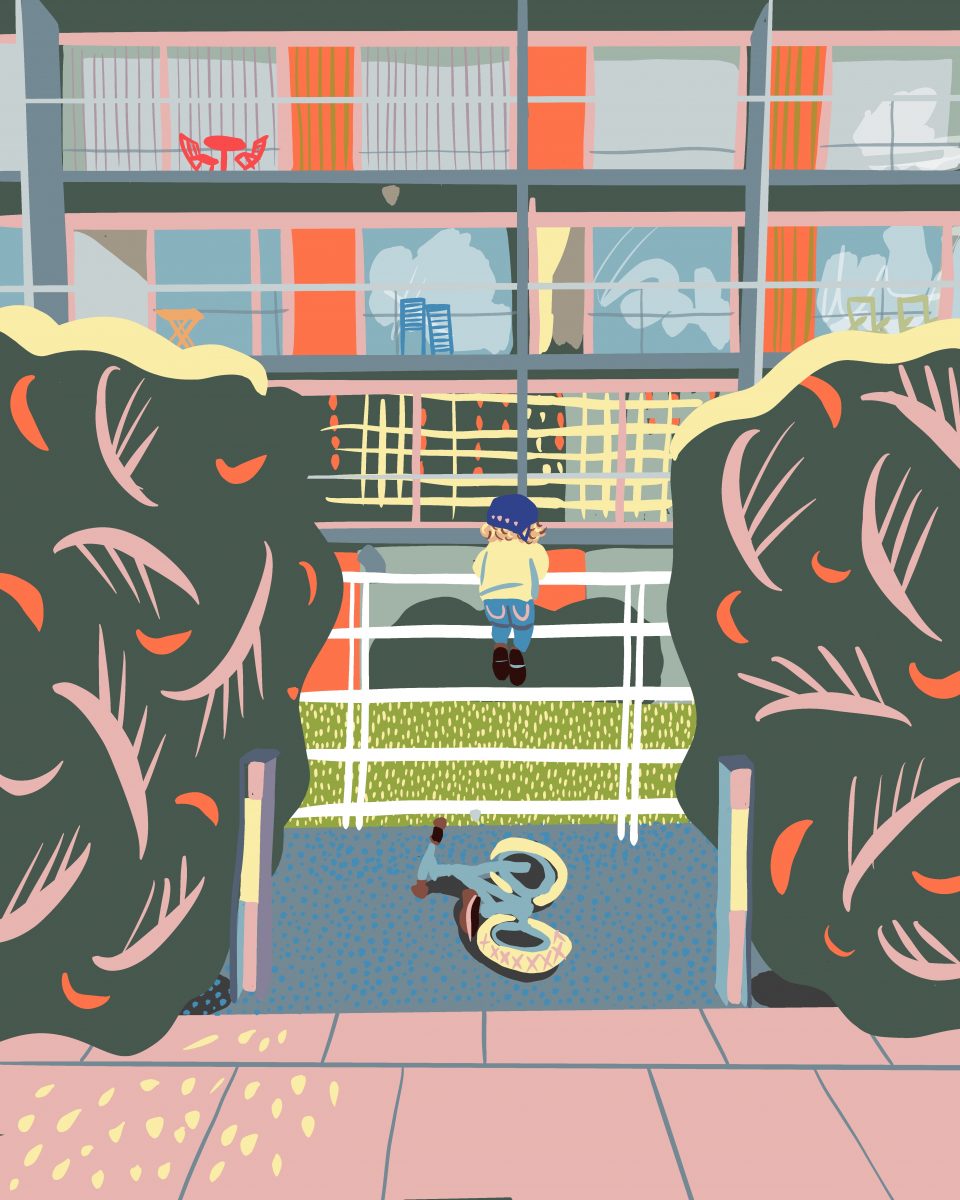
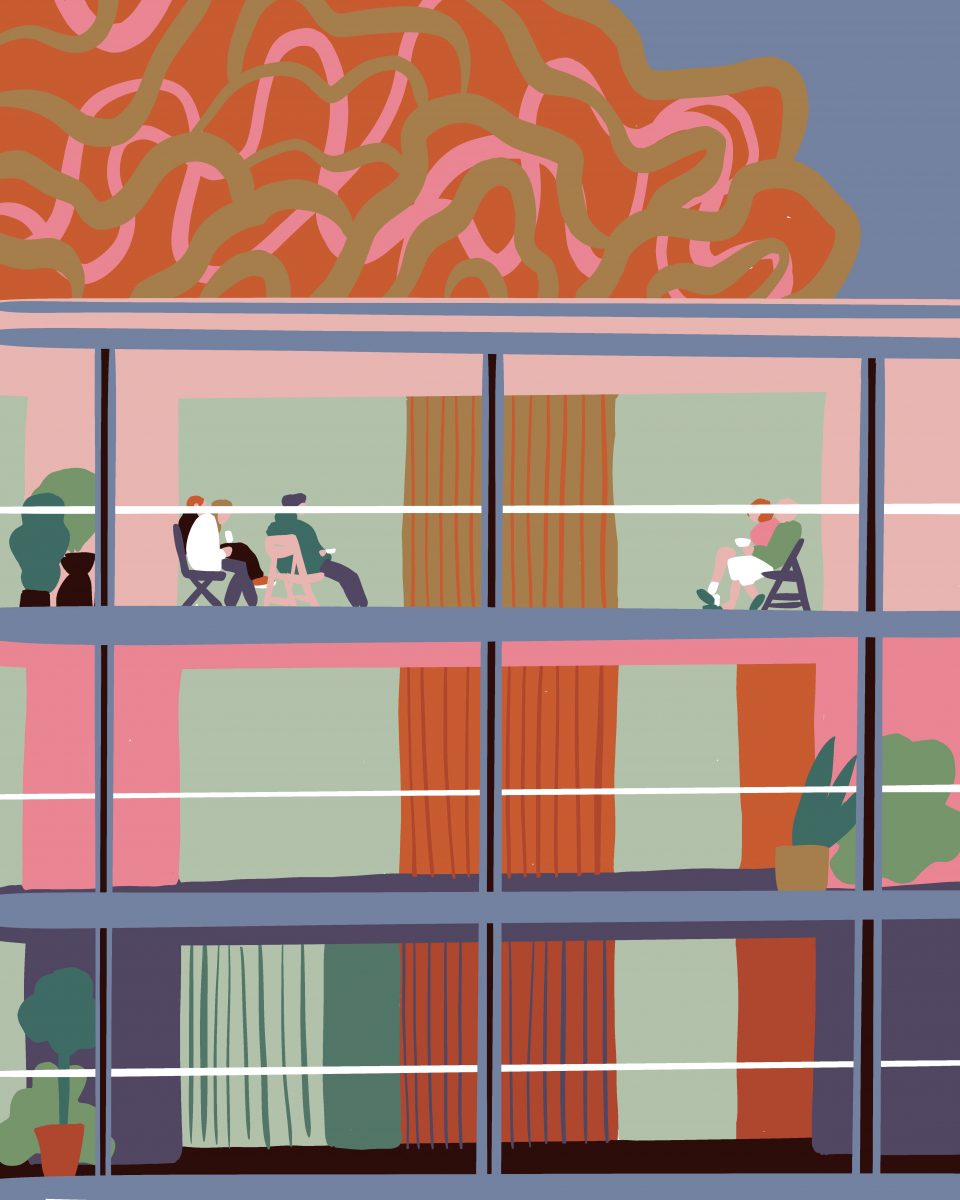
What was the process like to create these illustrations? Did they start as sketches, or were they created directly on the screen?
The process was quite dynamic. It was early march 2020 and I remember a few days with nice weather so I opened up our balcony sliding doors so you can sit half way inside and half way outside. I had my large sketchbook and colour pencils and started drawing my view. So the first drawings were made in a sketchbook. While sitting there I could see many of my neighbours doing the same, sitting outside. They were drinking coffee, they were reading, they were talking to friends on their screens, they were gardening, they were talking across balconies.
Some times I did quick sketches and thumbnails of scenes that I saw, conversations I heard or moments I wanted to capture and other times I spent 2 hours in a stretch from start to finish. The further I got into collecting scenes, the more I drew directly on the Ipad. The block of flats I live in have several courtyards, and in the centre of the 4 stands there is a large communal garden that used to be the football pitch for Arsenal. During the lockdown I spent time on my balcony, in the courtyards and the garden. The drawings are from all these micro adventures looking closely at what is near.
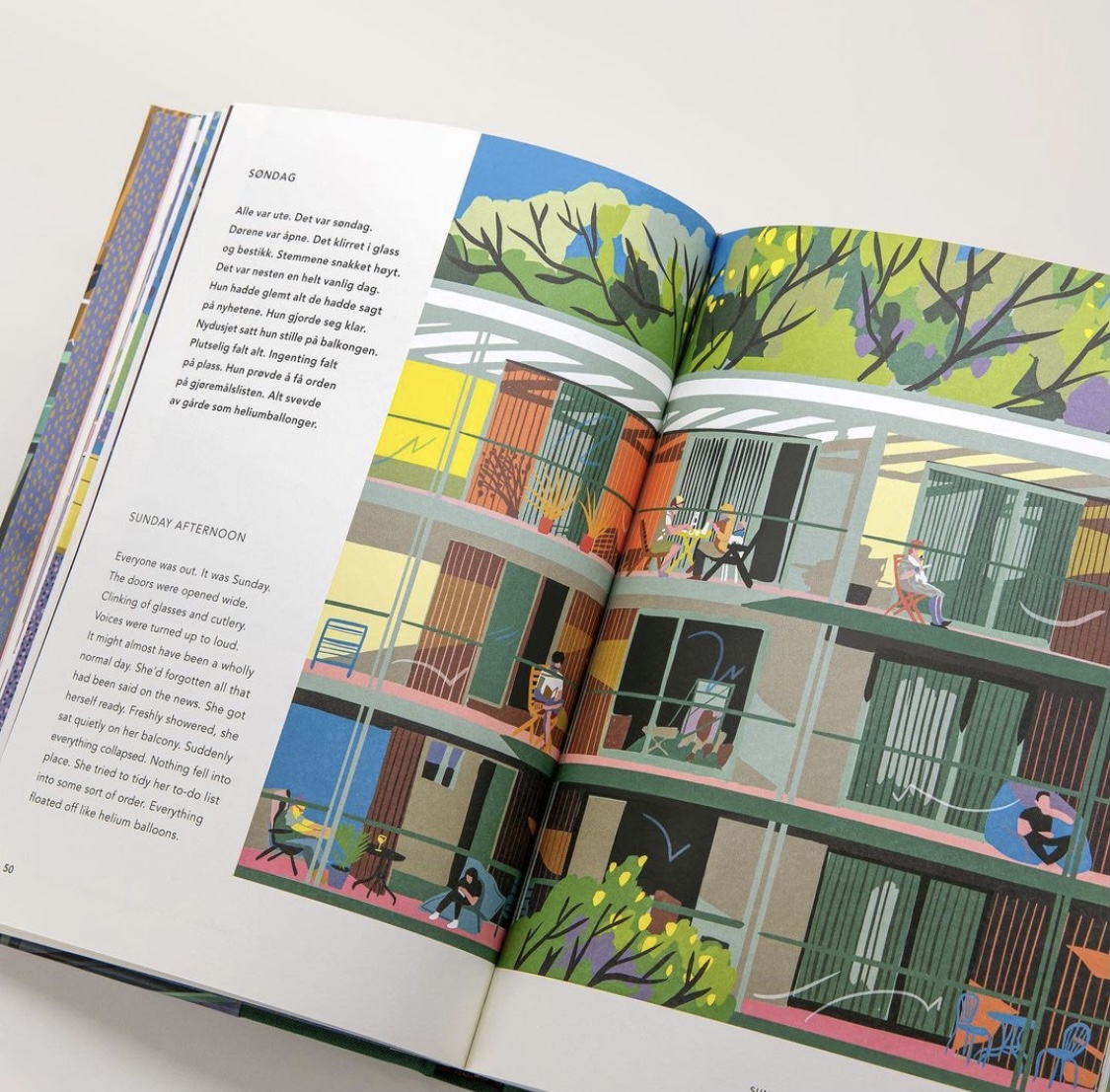
We noticed that the illustrations have a short story or poem next to them – tell us more about it.
I have always been writing as a part of my ideas process. Writing to describe the idea, the story and the concept behind what I draw. Most of my drawings have a text that belong to it. Sometimes a list of words, a paragraph or a whole page. I take notes on my phone when I am on the road and on my computer when I am at the office. I also take notes in my beautiful little leather notebook by Smythson. I love the thin lined blue papers, the gilded edges and the little pouch it sits in. I have a small Kaweco fountain pen with colourful ink that I write secrets, memoirs, observations, diary and poems inside.
It’s a valuable ritual for me. I started to write all my observations: neighbours drinking coffee on their balcony the same time every day, another neighbour practicing yoga, another skipping a rope. I asked myself questions: who are they? do they still work? are they scared? how long will this last? do they have to isolate? how will this affect the future? Then I asked myself questions, I spoke to my friends and family and suddenly all these observations and conversations formed short stories. During the summer I did a short course in writing short stories at my local bookshop so I could improve my writing and structure, which was a great experience.
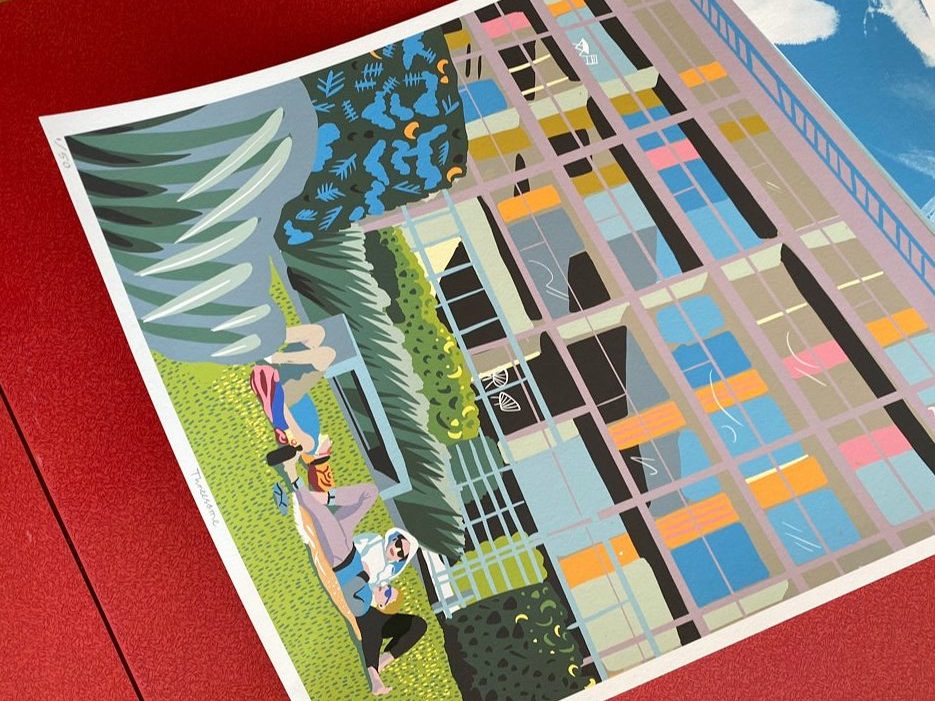
What inspired you to choose the final colour palette?
The colour palette was made quite early on in the project, to achieve a holistic look. I knew this would be a series of drawings and I wanted them to float and be almost similar to each other, like days were floating… we lost track of time. I took colours from the times of the day and the season, and made palettes using split complementaries and adding in some colour combinations that I just like: coral, yellows, strong greens. The project started in March and ended in July. The colours reflect this with more light, and bright summer colours towards the end.
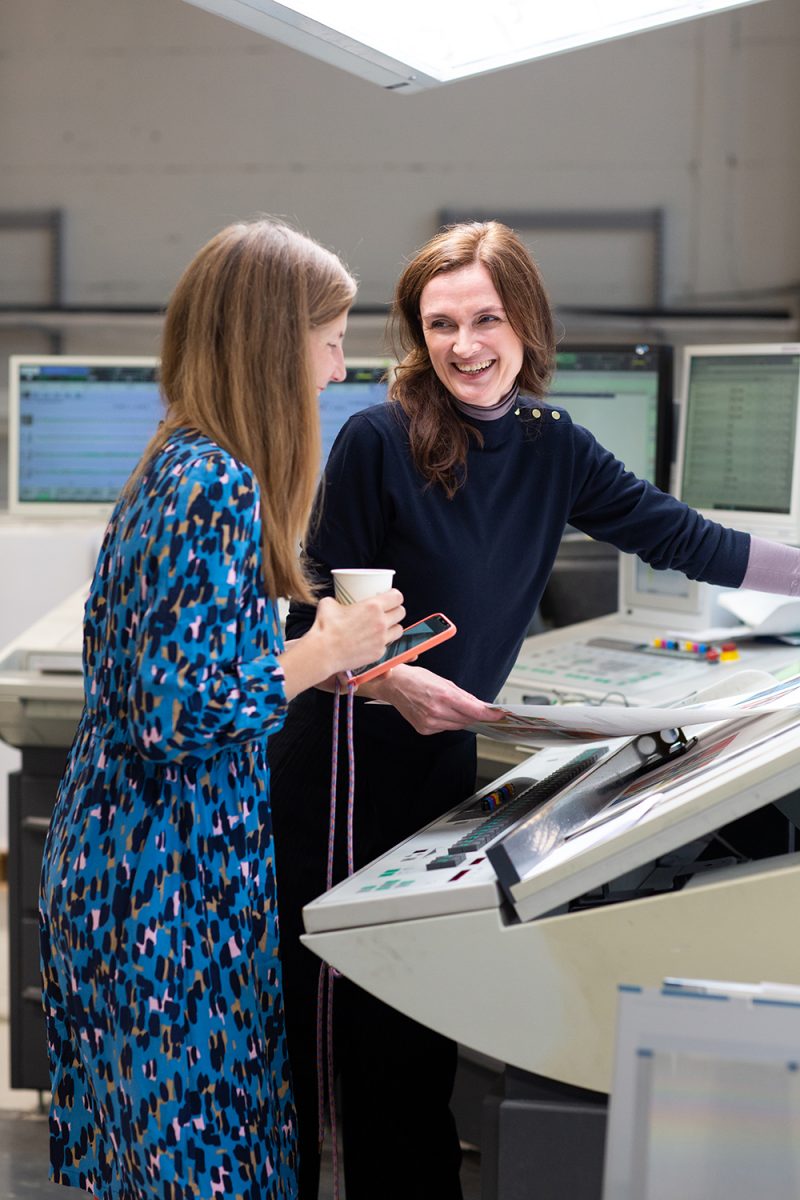
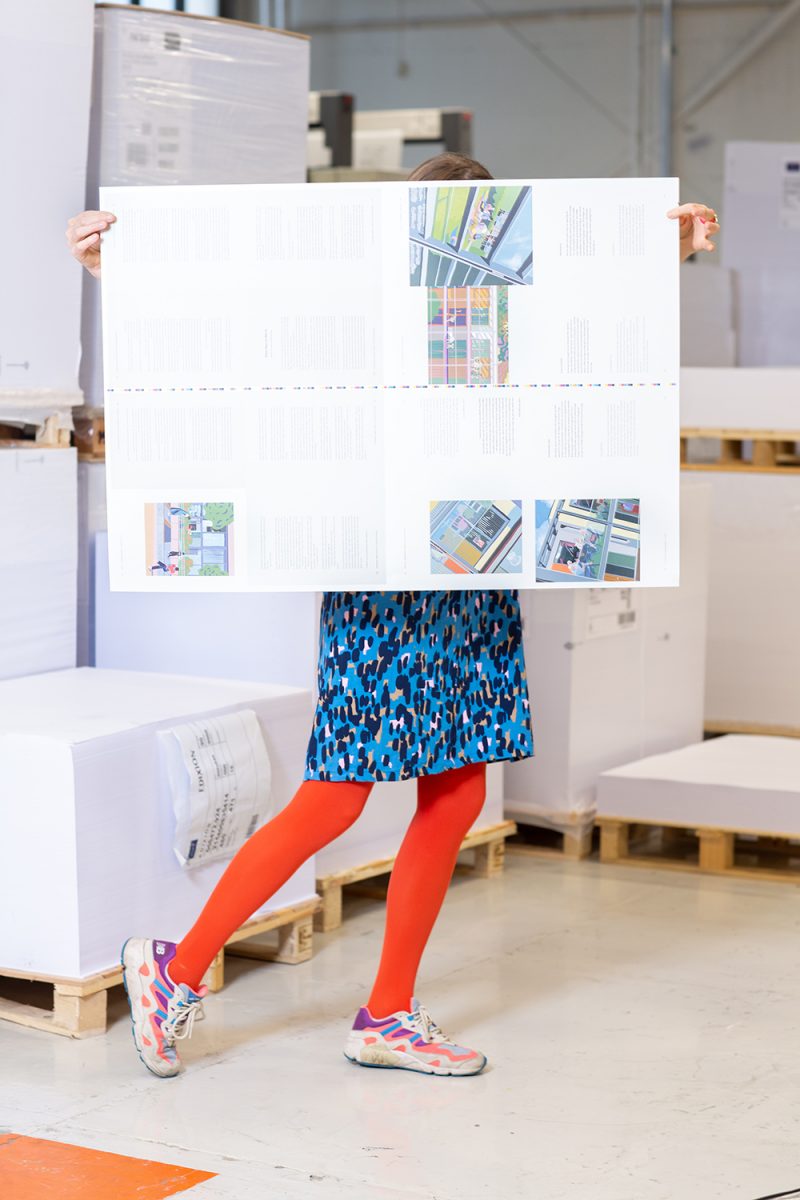
Photographs by Charlotte Wiig
What was the process like to publish the book?
Nina and I always share ideas. We discuss each others’ projects and visions. It is important to have creative conversations with colleagues and friends. Nina long had this dream to start a publishing press, and when she saw my texts and illustrations that I shared on Facebook she thought that it could work well as a book. She texted me and proposed the idea and we decided to embark on it together. We started writing applications for grants and made a plan for the work.

Photograph by Charlotte Wiig
Nina is so professional and it was amazing to work with her. She knows how to make a good book. She helped build a team with an author writing an essay, a text editor to go through the text and do translations, and I invited my friend Sondre (a social anthropologist) to do an interview/ conversation with me about the work, the study of home.
With different skills and experience, we have complemented each other in the process. By collaborating with different partners, all this helped to make the book even better.
I think the challenge is always just getting on with it. We set a deadline. By collaborating together we had to be accountable to each other, and to everyone involved.
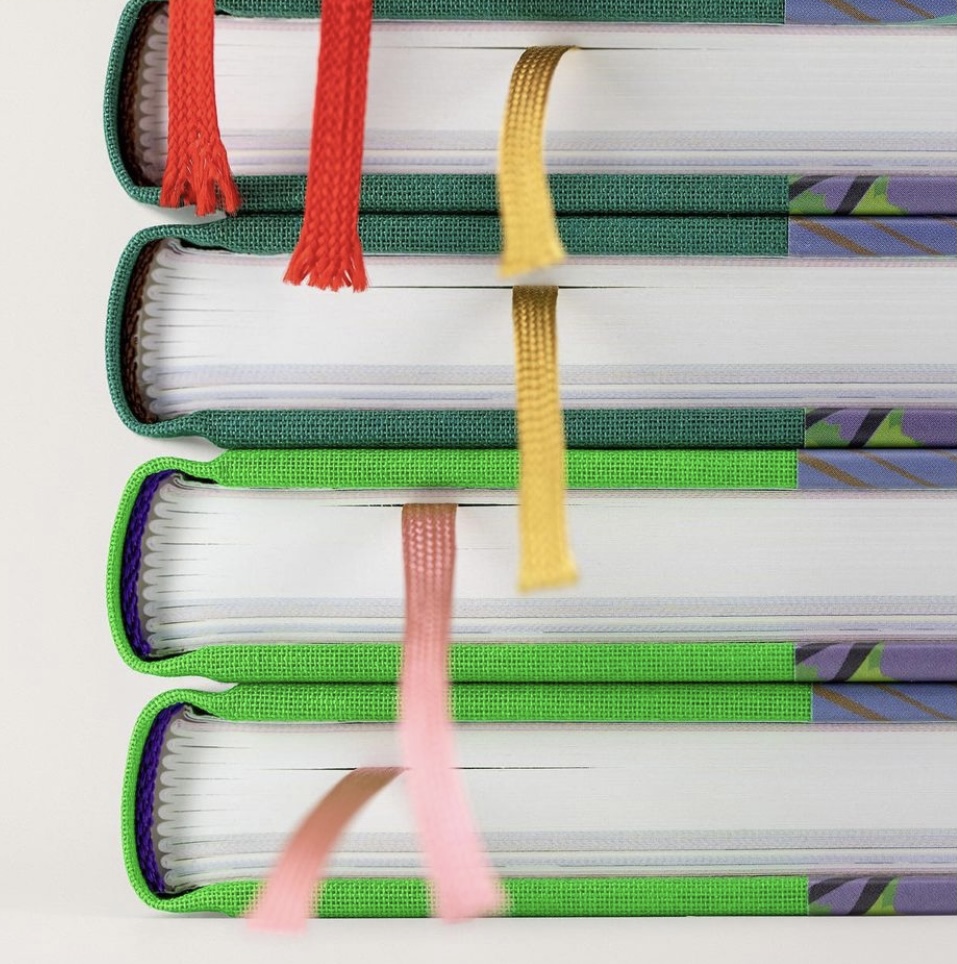
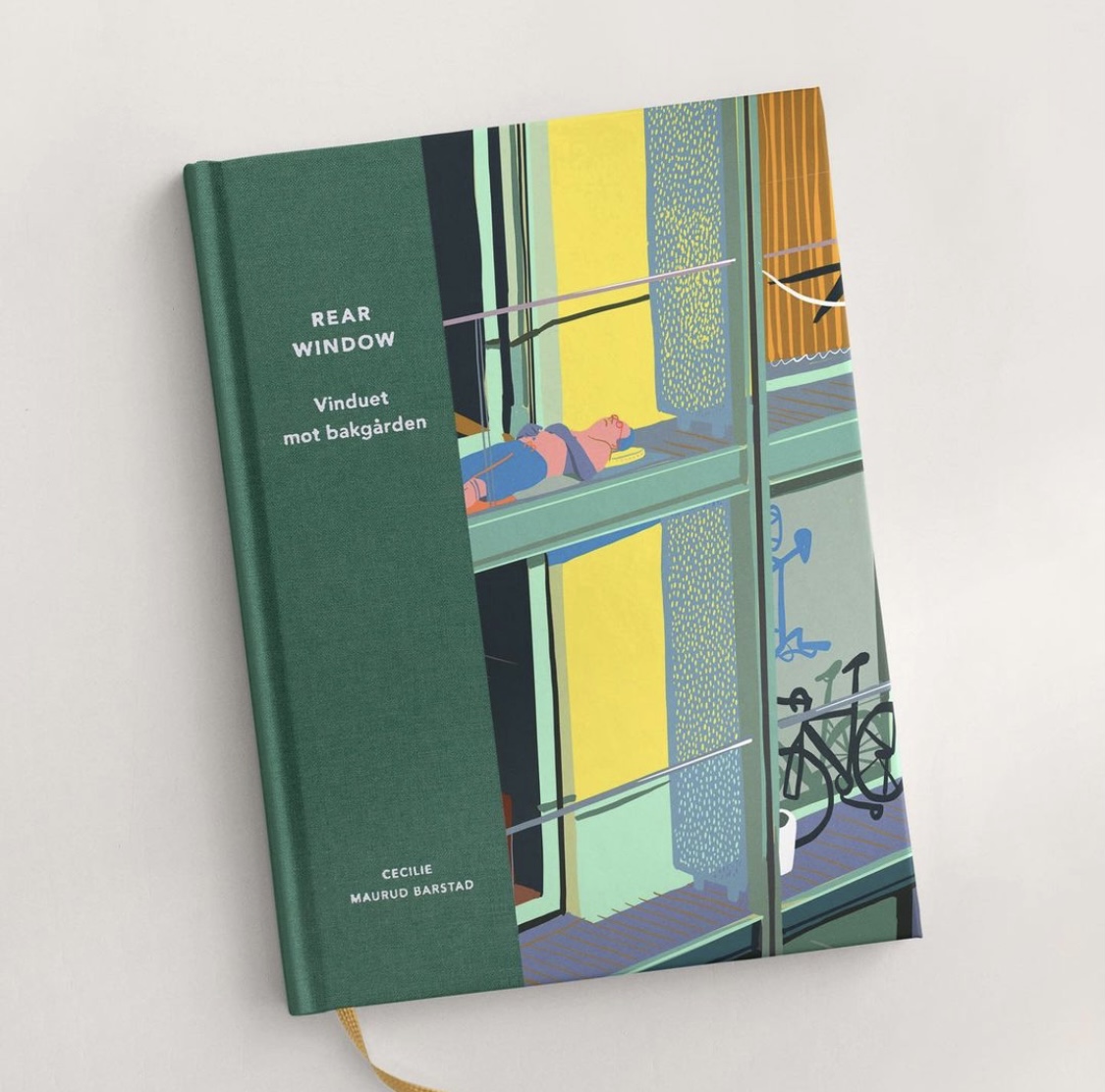
What would you like people to notice or feel with Rear Window?
I hope they appreciate the stories, observations and the illustrations of course. And the beautiful production. When choosing materials we wanted to be economic and chose what the binder already had in stock. We chose 4 different book cloth colours to our 4 different covers, and each colour had different headbands and ribbons too.
I would love if people feel inspired to write and reflect on their own experience during this tough times. The writing has been my own therapy in many ways: to start each day with writing down everything I think about as a warm up and then create short stories.
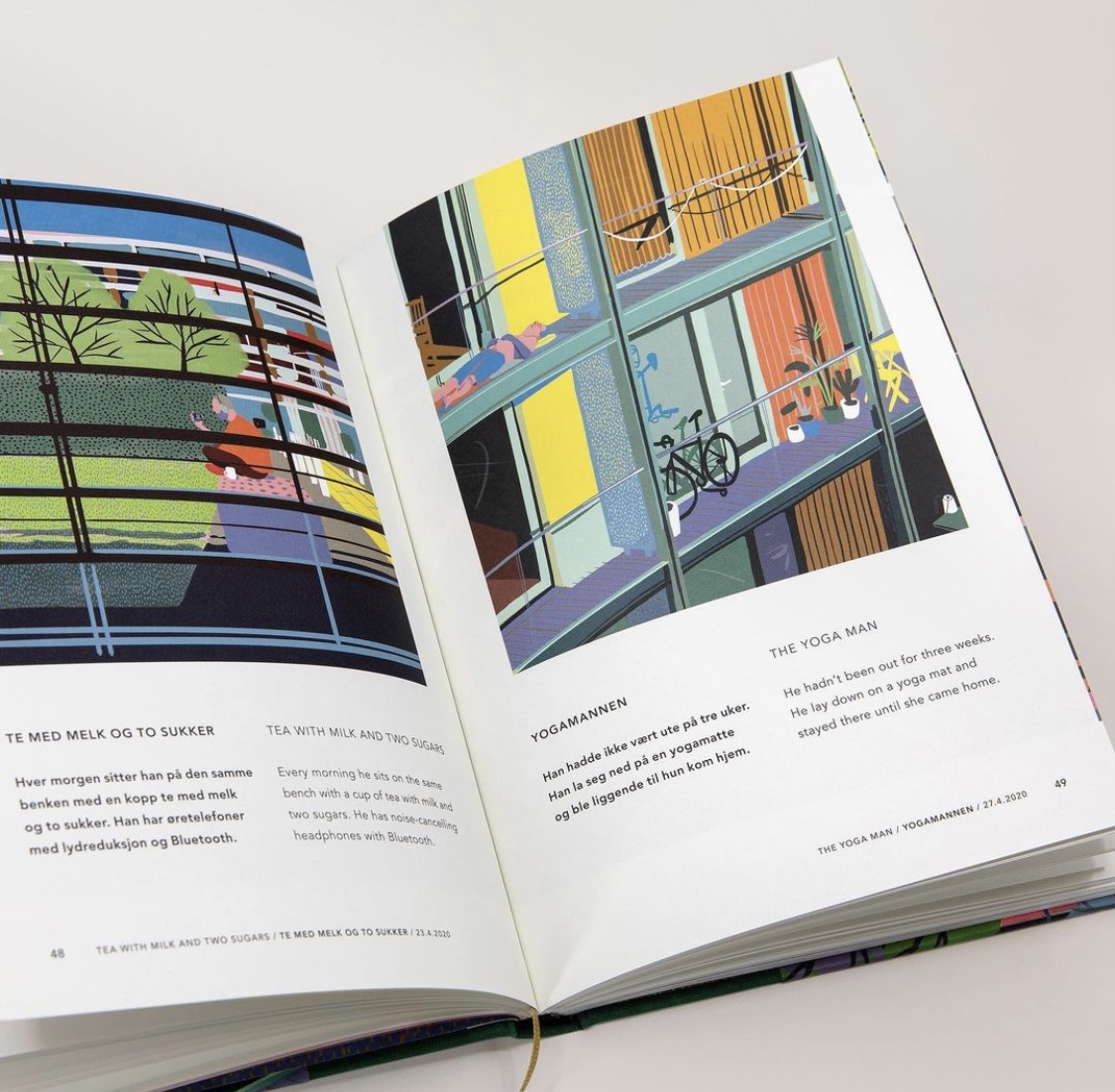
Many thanks to Cecilie Barstad for her time and answers.
You can find more of her work on her Website and Instagram.
More information about Rear Window and how to purchase can be found here. The book is printed by ETN Grafisk and bound at Bokbinderiet Johnsen in Skien, Norway. Edition of 700.
Back to News Page
